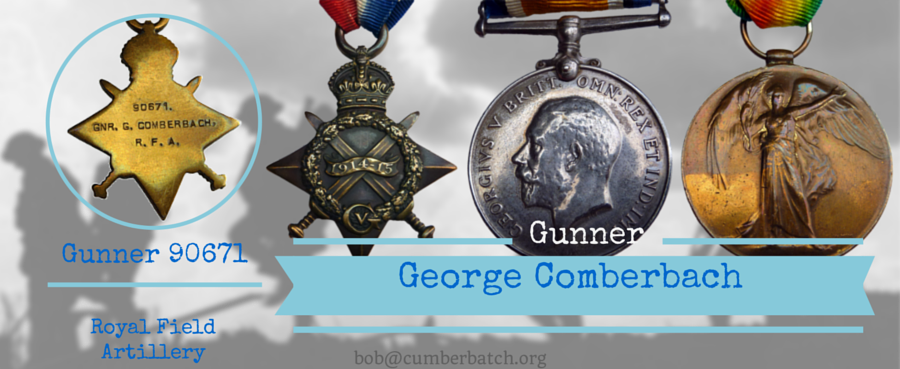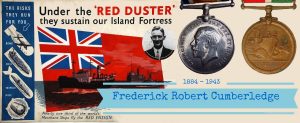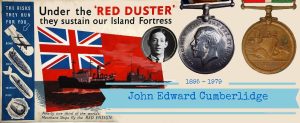Search

George Comberbach
George Comberbach was the son of George Comberbach and Elizabeth nee Walmsley. He was born in 1873 in Blackburn, Lancashire, England. He was originally spent almost 2 years in a militia and can be found in barracks at Habergham Eaves, Burnley, England in the 1891 census. 10 years previously he was in the Union Workhouse, Haslingden Road, Blackburn, England. He served in the
On 3 February 1894 he married Ellen Wood at St Peters Church, Blackburn, England. They had three children together:
- George Edward Comberbach born 18 June 1894 – 1985
- Robert Comberbach born 1896 – 1961
- Clarice Comberbach born 1900 and died 1902
In 1902, George Comberbach developed neurasthenia in Blackburn. Neurasthenia is a ‘nerve weakness’. The disease was identified and named in the late 1800s when nervous illnesses and nervous breakdown became common in North America and Europe. The American neurologist George Beard popularised the term, attributing the ‘epidemic’ of neurasthenia to the speed and fragmentation of modern industrialised life – especially in the US. He identified six factors: ‘steam power, the periodical press, the telegraph, the sciences, the mental activity of women, and the erosion of religious faith’. The neurasthenia diagnosis was based on cutting-edge research into disabling nerve diseases such as muscular dystrophy and multiple sclerosis. The name, however, never caught on among British physicians because many regarded it as an unconvincing American attempt to lend false scientific legitimacy to the old ‘English malady’ of nerves.
He enlisted on 19th April 1915 in Preston, Lancashire at the age of 41 for the duration of the war and served for 1 year and 346 days in total.
Certificate of Medical Examination – I have examined (Name) George Comberbach and find that he does not present any of the causes of rejection specified in the Regulations. He can see at the required distance with either eye; his heart and lungs are healthy; he has the free use of his joints and limbs; he does not suffer from hernia; and declares that he is not subject to fits of any description. I consider him fit for service as a local guard in the Territorial Force. April 19, 1915, PrestonCertificate of Primary Military Examination – I hereby certify that the above-named man was inspected by me, and I consider him Fit for service as a local guard in the Territorial Force, and that due care has been exercised in his enlistment. April 19, 1915, Preston.Certificate of Approving Officer – I certify that this Attestation of the above-named man is correct, and properly filled up, and that the required forms appear to have been complied with. I accordingly approve, and appoint him to the 4th Loyal North Lancs Regt, April 19, 1915, Preston.
He was considered too old for active war service so was enlisted in the Territorial Force of the 4th Battery of the Loyal North Lancashire Regiment as Private 20909 but on 29th July 1916 he transferred to be Private 35988 in the 336th Protection Company of the Royal Defence Corps.
In 1916 his medical illness recurred. George suffered from loss of memory and noises in his head. He was admitted to hospital nine times for nervous breakdowns. He was admitted to Pembroke Dock Hospital for 11 days on one occasion. At his medical examination George described himself as "Completely Done." On 30 March 1917 George Comberbach was permanently discharged from the Army as being no longer physically fit due to the neurasthenia he contracted in 1902 in Blackburn. His description at the time of his discharge was:
Age: 42Height: 5 feet 5 inchesComplexion: FairEyes: BlueHair: BrownTrade: ClerkIntended place of residence: 41 Pringle Street, Blackburn
Military character: Very Good
Character awarded in accordance with King's Regulations:
This man bears a very good character, is steady and well where directed.
An Army Medical Board determined that he his neurasthenia was contracted before his military service and was not aggravated by it. However an appeal, under Royal Warrant, resulted in George being awarded a £25 gratuity.
Medal Index Card
| Name | Corps | Reg. No. | Rank | Date of Discharge | Cause of Discharge |
| Comberback George | Royal Defence Corps 336 Protection Company | 35988 | Private | 30 March 1917 Enlistment: 19 April 1915 |
Sickness Para 392 XVI Kings Regulations |
Action taken: List TP/1033
ROLL OF INDIVIDUALS entitled to the "WAR BADGE"
T.P. 1033
Regimental No: 35988
Rank: Private
Name: Comberback George
Unit discharged from: 336 Pro. Co. RDC
No of Badge: 39999
Date of Enlistment: 19 April 1914
Date of Discharge: 30 March 1917
Cause of Discharge: Para 392 XVI Kings Regulation Sick
Whether served overseas: No
At 4, London Wall Buildings, E.C. 24 March 1917



